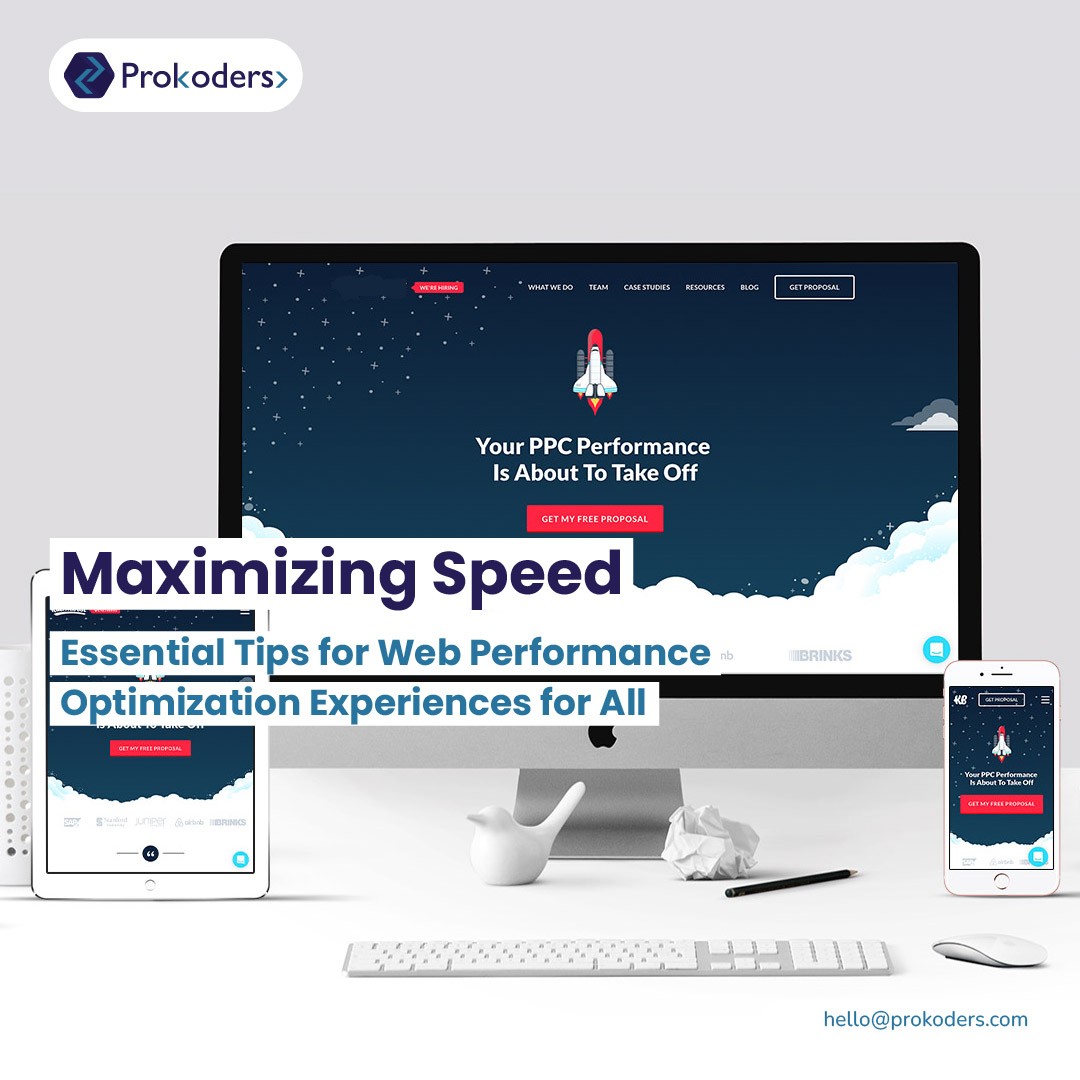
The internet operates at the speed of a click, and user expectations align accordingly. Websites that load swiftly are not just preferred; they are essential. Search engines echo this sentiment by prioritizing faster-loading pages. Enter web performance optimization – the linchpin for meeting user expectations, retaining visitors, and securing a competitive edge. From fine-tuning image sizes to harnessing the power of browser caching, every aspect of your website can be optimized for speed. This article aims to explore actionable tips that can significantly enhance overall website performance, providing you with the tools to navigate the complexities of web optimization effectively.
Speed Enhancements:
· Efficient Coding Practices:
1. Optimize HTML , CSS, and JavaScript by eliminating unnecessary spaces, comments, and code.
2. Minify scripts to reduce file sizes without compromising functionality.
3. Implement asynchronous loading for non-essential scripts to prevent blocking page rendering.
· Content Delivery Networks (CDNs):
4. Leverage CDNs to distribute content across multiple servers globally, reducing latency.
5. Cache static assets on CDN servers for quicker access, improving overall page load times.
6. Utilize CDN capabilities to automatically compress and deliver images, stylesheets, and scripts efficiently.
· Mobile Optimization:
1. Prioritize responsive design to ensure a seamless experience on various devices.
2. Compress and resize images for mobile screens, promoting faster loading times.
3. Implement lazy loading for images and other non-critical resources to enhance mobile performance.
· Performance Tweaks :
1. Browser Caching Strategies:
· Set appropriate expiration dates for cached resources to balance freshness and performance.
· Utilize versioning or fingerprinting for static files to ensure users fetch the latest versions.
· Leverage server directives to instruct browsers to cache certain elements, reducing server requests.
2. Optimized Image Loading:
· Compress images without compromising quality using modern formats like WebP.
· Implement responsive image techniques to serve appropriately sized images based on the user's device.
· Consider lazy loading for images, enabling them to load only as they come into the user's viewport.
3. Gzip Compression:
· Enable Gzip compression to reduce the size of text-based assets like HTML, CSS, and JavaScript.
· Configure server settings to prioritize compression for MIME types that benefit most from Gzip.
· Regularly test and monitor the impact of Gzip compression on website speed and adjust settings accordingly.
· Optimization Strategies :
· Efficient Resource Loading:
· Prioritize critical resources by loading them first to ensure a faster initial page render.
· Combine and minimize CSS and JavaScript files to reduce the number of server requests.
· Utilize preloading and prefetching for essential resources to enhance overall loading efficiency.
· Effective Code Splitting:
· Implement code splitting techniques to load only the necessary code for a specific page.
· Leverage browser features like HTTP/2 or HTTP/3 to handle multiple concurrent requests efficiently.
· Regularly audit and optimize third-party scripts to prevent them from negatively impacting performance.
· Continuous Monitoring and Adjustments:
· Use web performance monitoring tools to identify bottlenecks and areas for improvement.
· Regularly audit and update third-party plugins and scripts to ensure compatibility and optimal performance.
· Stay informed about new web technologies and optimization techniques, adapting strategies for evolving industry standards.
By focusing on these comprehensive strategies centered around speed, performance, optimization, compression, and efficient resource management, your website can achieve optimal results in today's competitive online environment. Regularly evaluate and adjust your optimization tactics to ensure sustained success and an exceptional user experience.
Finally , In the dynamic world of the internet, prioritizing web performance optimization is not just a choice; it's a strategic imperative. By implementing the key tips discussed in this article, your website can not only improve its loading speed but also elevate user satisfaction and engagement. Adapting to the evolving digital landscape is not an option; it's a necessity for success. Invest the time to optimize your website, and the dividends will manifest in improved search engine rankings, increased traffic, and a legion of satisfied users.
Services you may concern :
Web Development
Mobile App Services
UI/UX Design
Web and App Hosting
Testing Services
FAQs On Maximizing Speed: Essential Tips for Web Performance Optimization
Website speed is pivotal as it directly influences user experience and search engine rankings. Swift-loading websites keep visitors engaged, resulting in lower bounce rates and higher conversion rates. Search engines like Google prioritize faster websites, positively impacting visibility and overall ranking.
Image optimization is vital for web performance. Use compressed file formats like JPEG or WebP, resize images to appropriate dimensions, and consider lazy loading. Lazy loading ensures images load only when they enter the user's viewport, reducing initial page load times.
Browser caching stores frequently accessed resources locally on the user's device, minimizing the need for repeated downloads. This significantly reduces load times, making effective browser caching a crucial strategy for optimizing website performance.